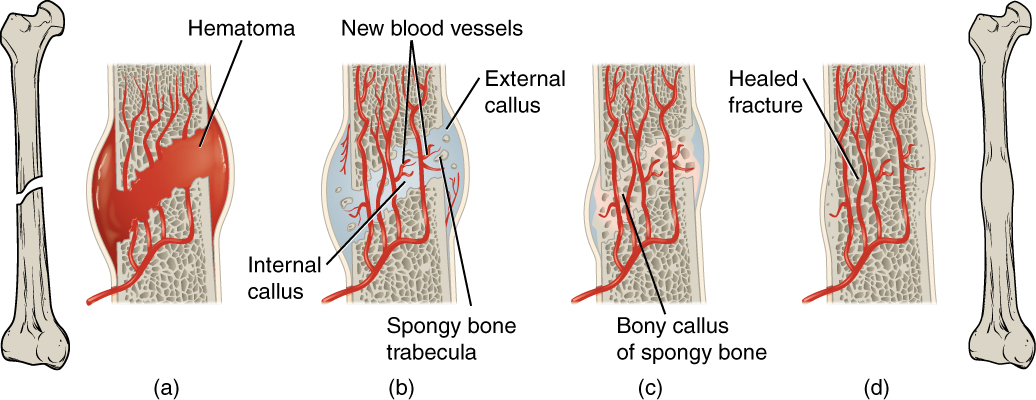A&P - 6.5 Fractures: Bone Repair
1/22
There's no tags or description
Looks like no tags are added yet.
Name | Mastery | Learn | Test | Matching | Spaced |
|---|
No study sessions yet.
23 Terms
fracture
a crack or a break in a bone (broken bone)
closed reduction
manual manipulation of a broken bone to set it into its natural position without surgery
open reduction
surgical exposure of a bone to reset a fracture
classification of fractures
classified by their complexity, location, and other features
whether the bone penetrates the skin
simple
compound
orientation of the break
transverse
linear
position of the bone ends after the fracture
non-displaced
displaced
simple (closed)
bone breaks cleanly but does not penetrate the skin
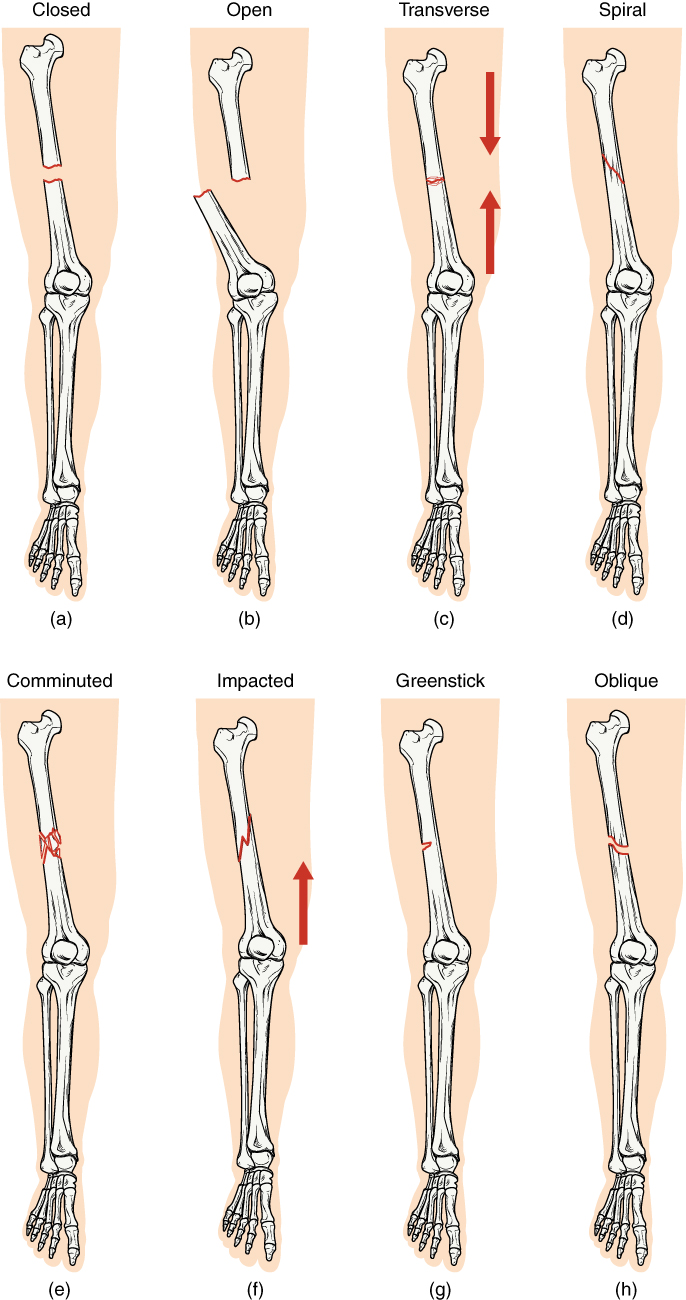
compound (open)
broken ends of bone protrude through the tissue and skin
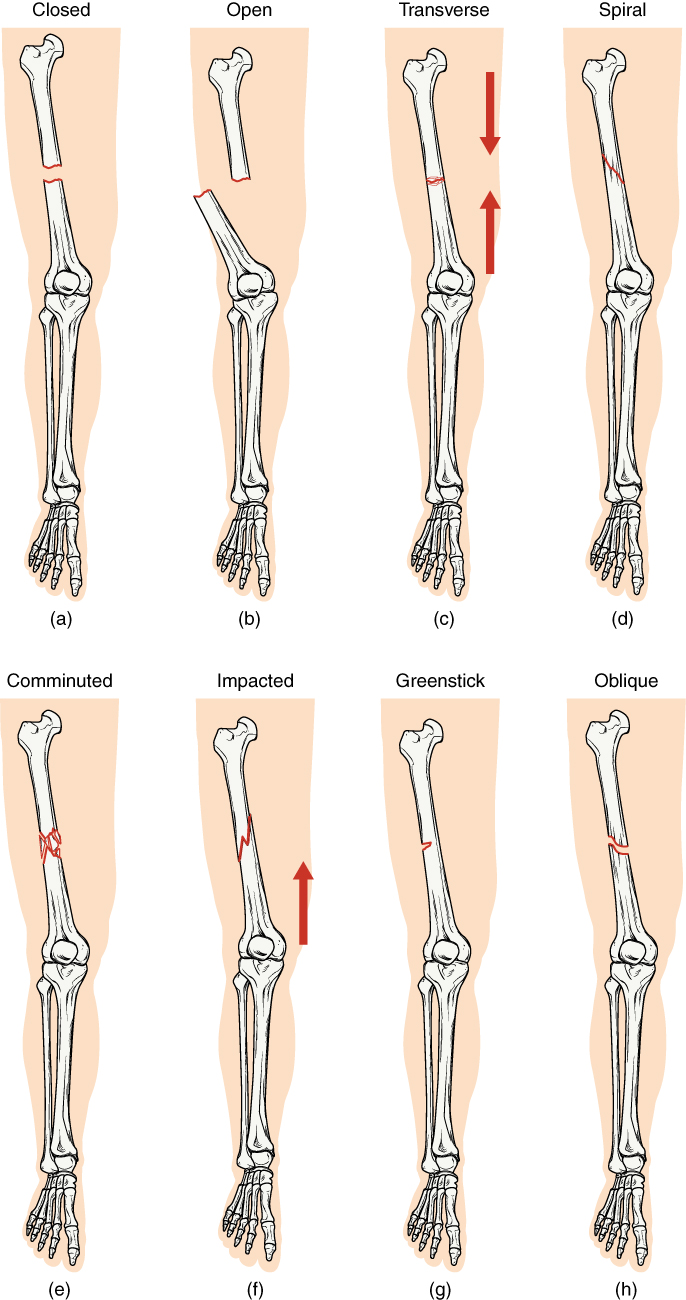
transverse
break occurs perpendicular to the long axis of a bone
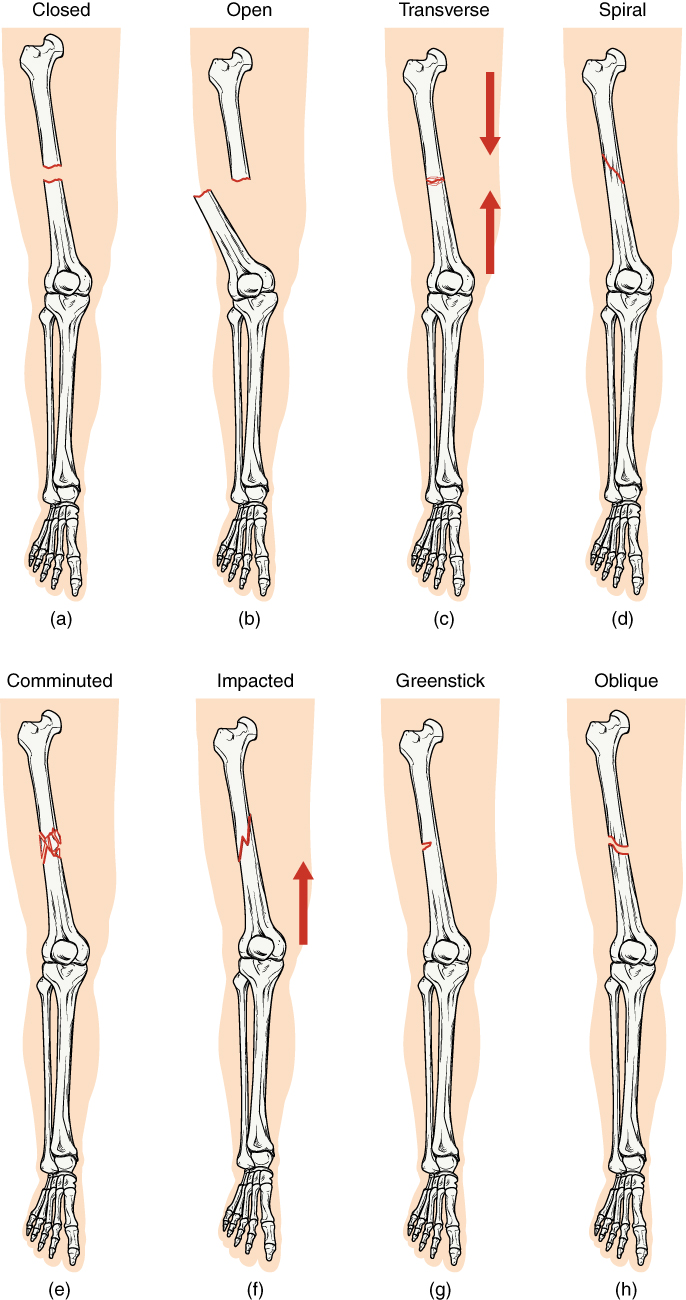
linear
breaks parallel to the long axis of the bone
non-displaced
the bone ends retain their position
displaced
the bone ends are out of normal alignment
types of fractures
some fractures may be described using more than one term because it may have features of more than one type (e.g., an open transverse fracture)
closed fracture
open fracture
transverse fracture
spiral fracture
comminuted fracture
impacted fracture
greenstick fracture
oblique fracture
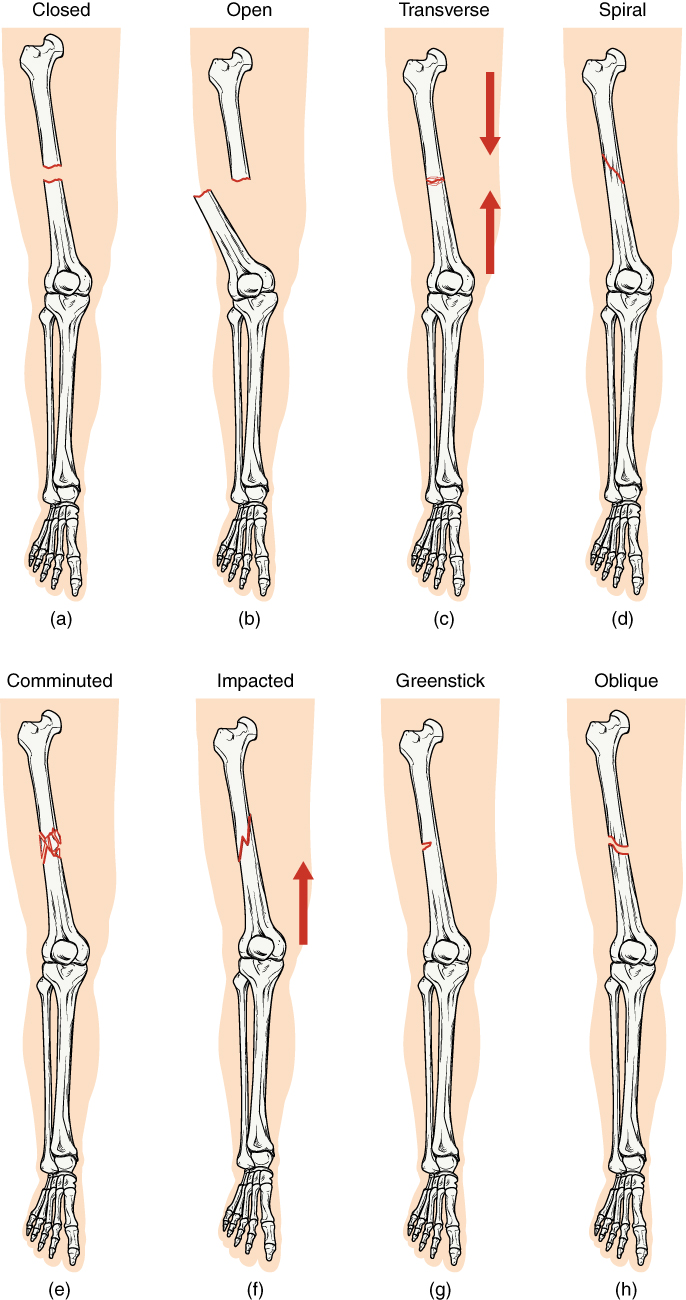
transverse fracture
occurs straight across the long axis of the bone
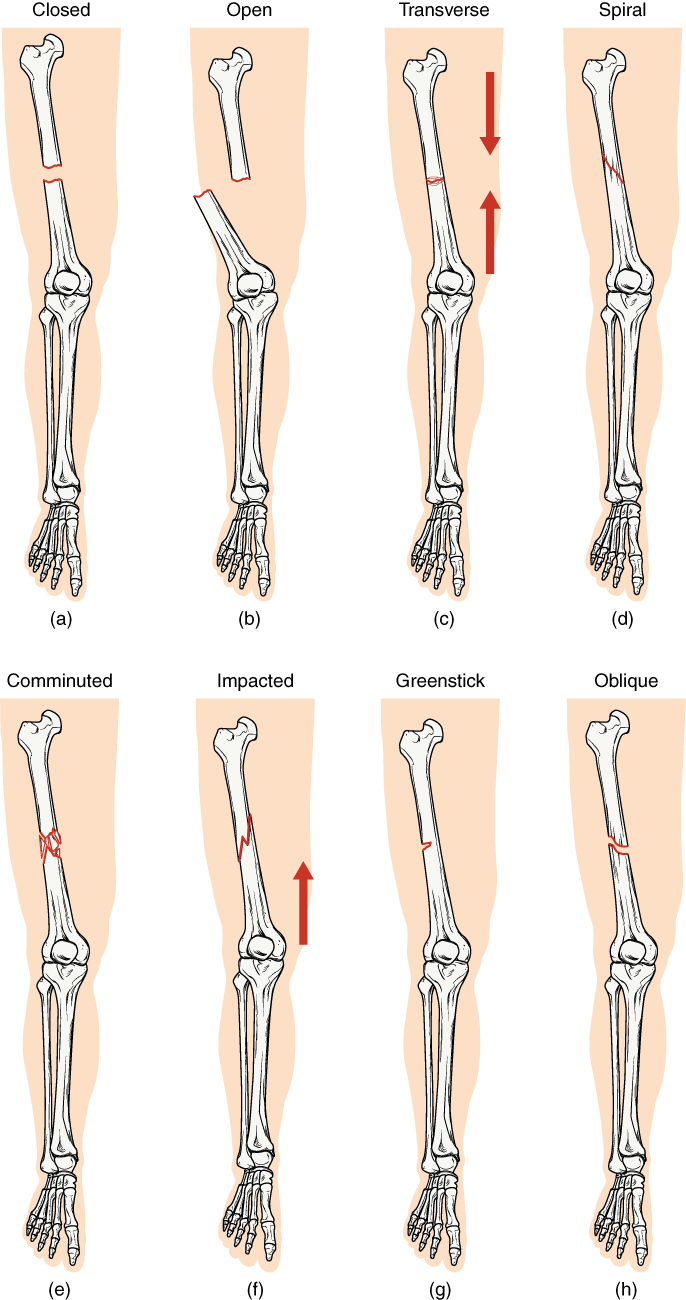
oblique fracture
occurs at an angle that is not 90 degrees
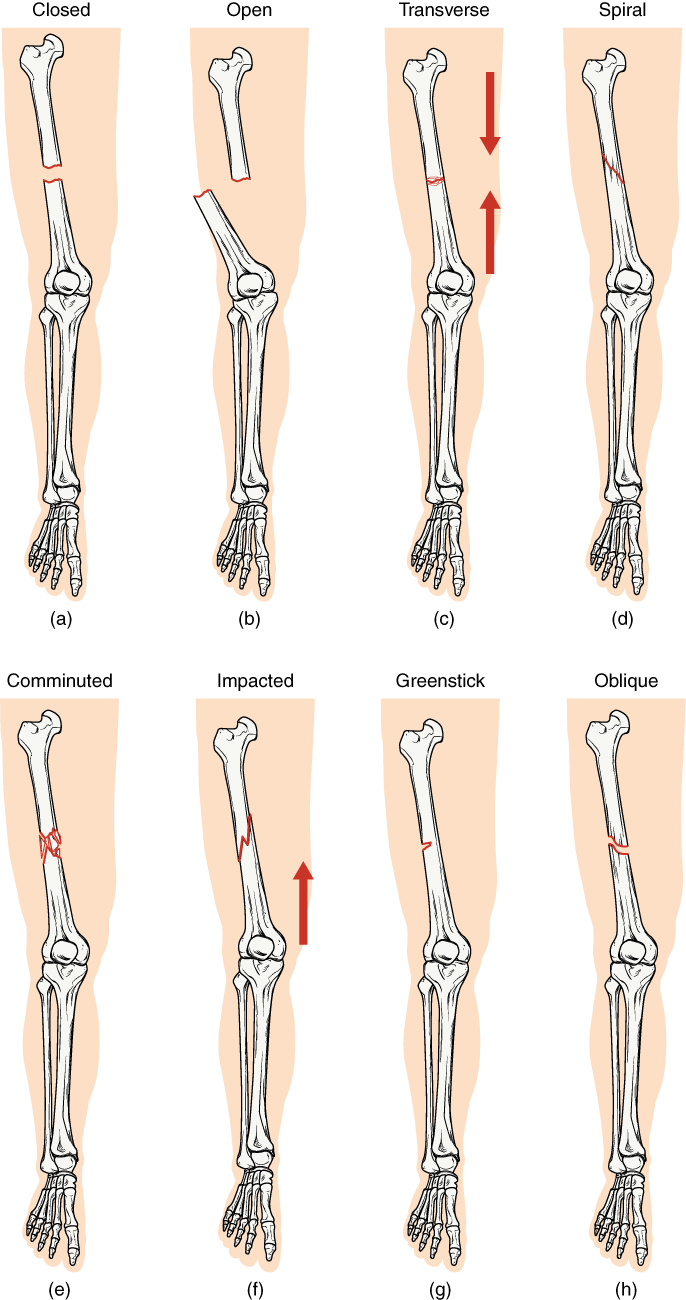
spiral fracture
bone segments are pulled apart as a result of a twisting motion
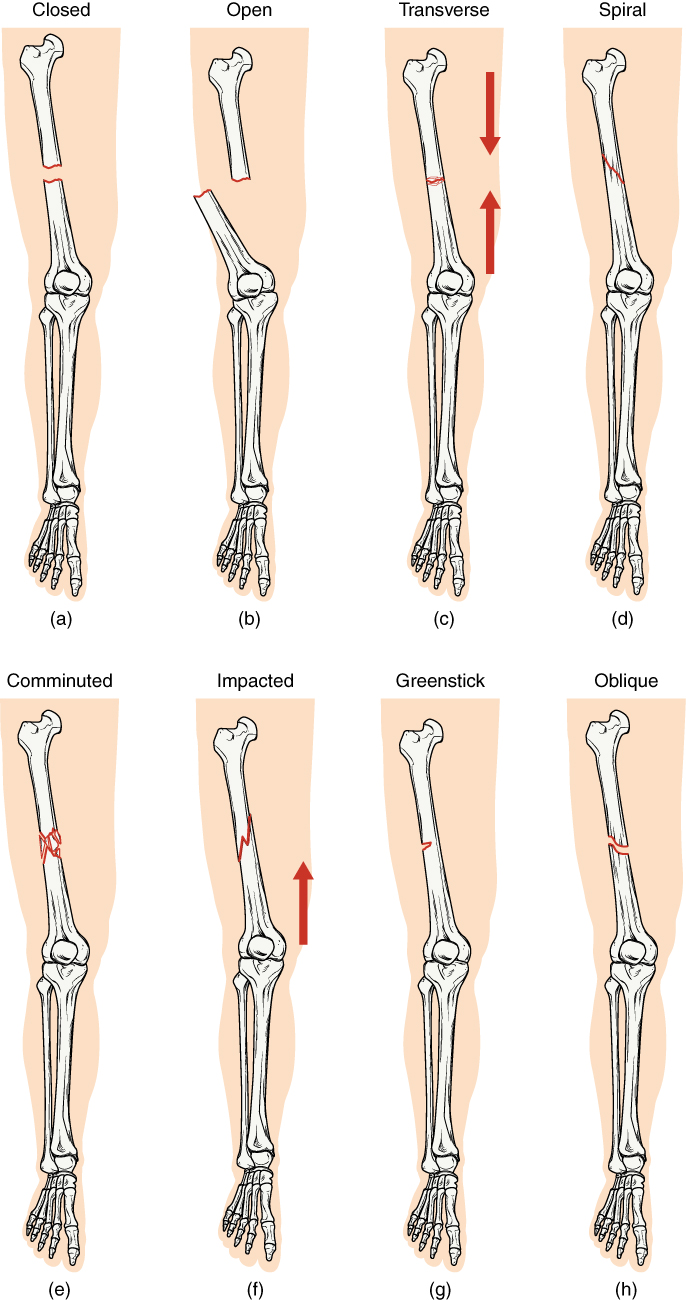
communicated fracture
several breaks result in many small pieces between two large segments
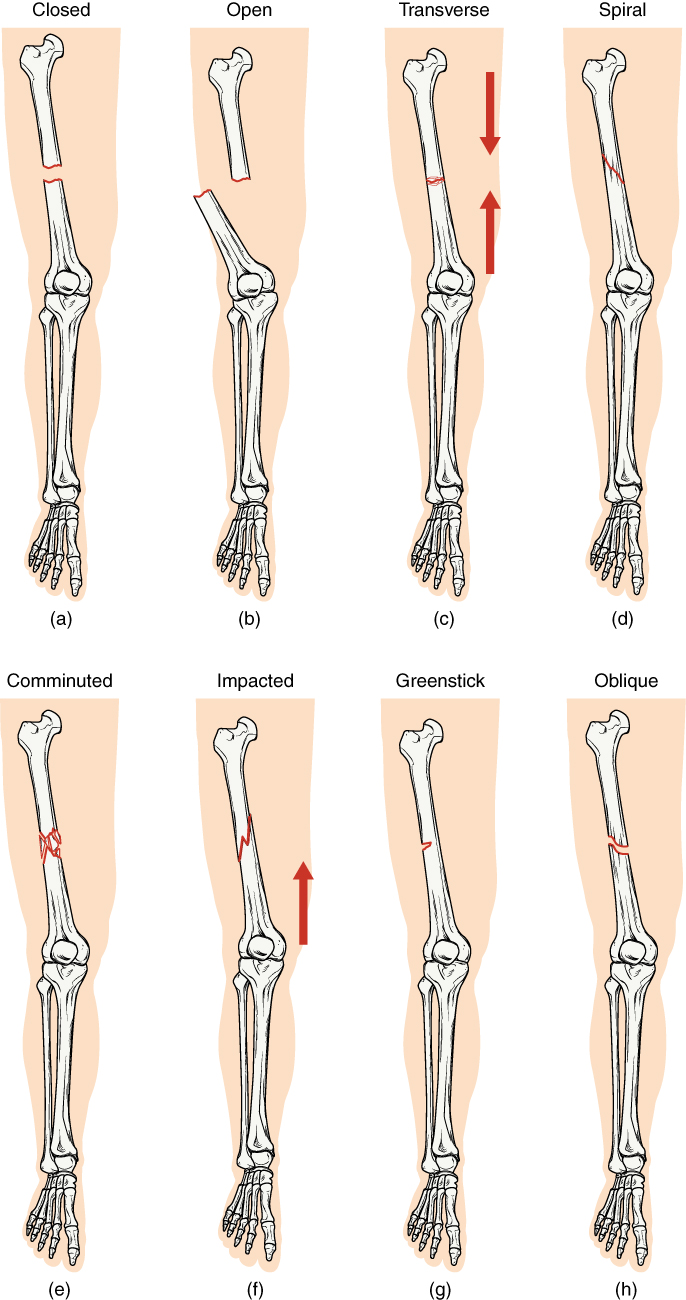
impacted fracture
one fragment is driven into the other, usually as a result of compression
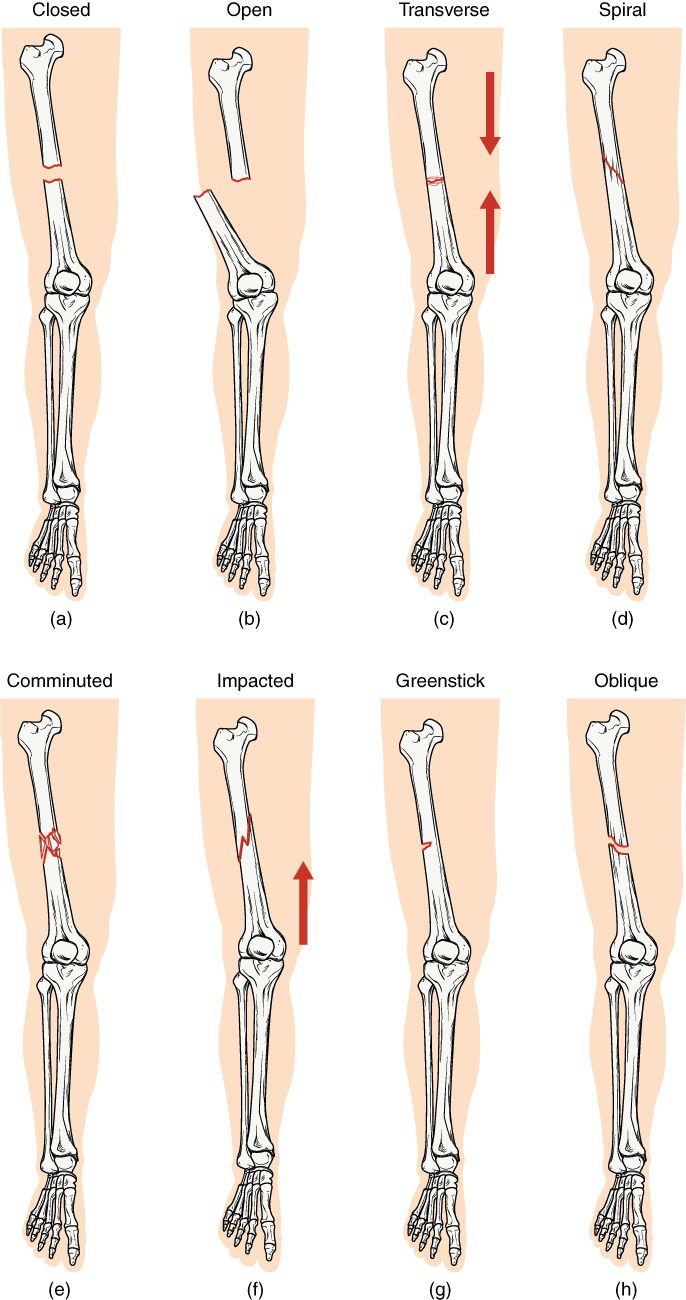
greenstick
a partial fracture in which only one side of the bone is broken
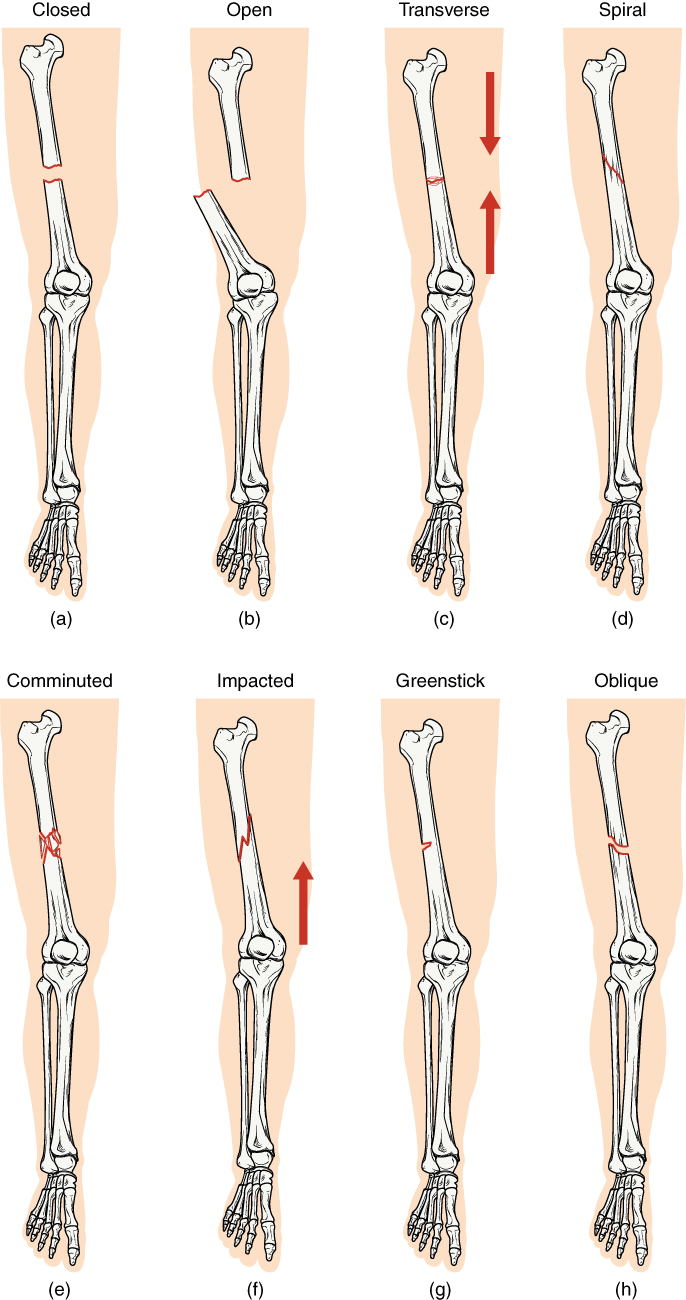
open (or compound) fracture
a fracture in which at least one end of the broken bone tears through the skin; carries a high risk of infection
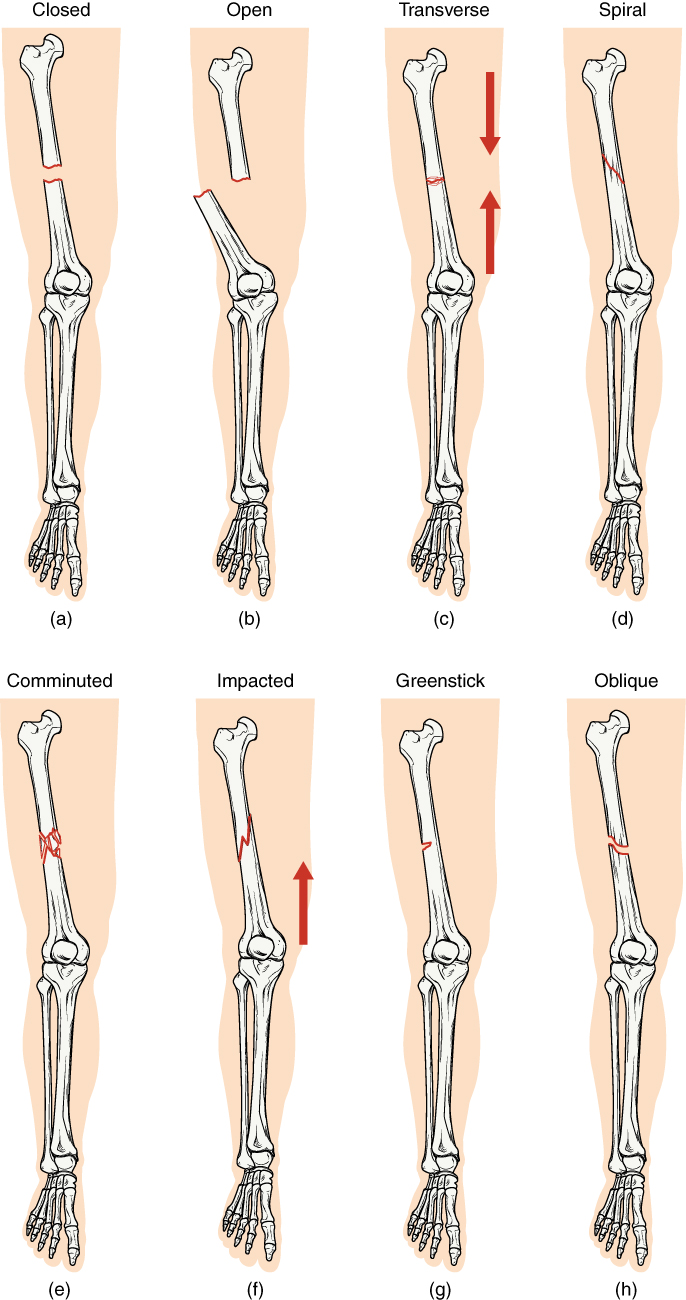
closed (or simple) fracture
a fracture in which remains intact
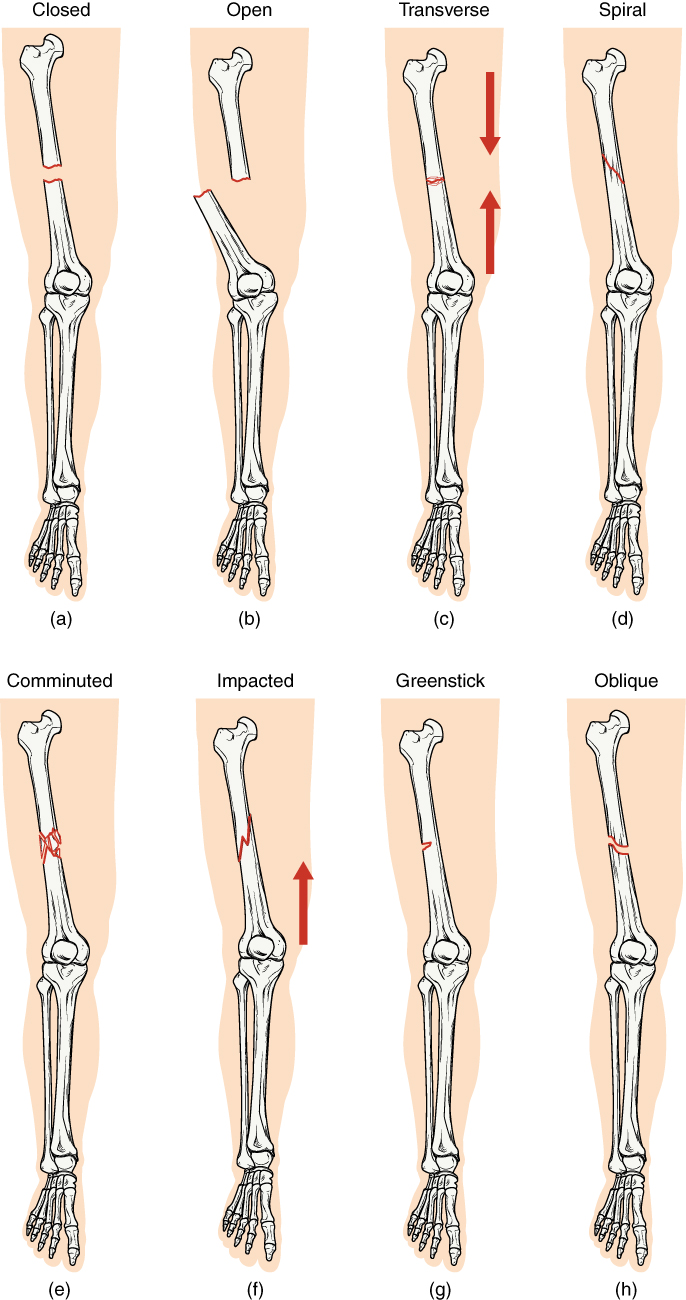
fracture repair
the healing of a bone fracture follows a series of progressive steps
a fracture hematoma forms
when a bone breaks, blood flows from any vessel torn by the fracture, the blood begins to clot forming a fracture hematoma
the disruption of blood flow to the bone results in the death of bone cells around the fracture
internal and external callus form
within 48 hours after the fracture, chondrocytes from the endosteum have created an internal callus by secreting a fibrocartilaginous matrix between the two ends of the broken bone
periosteal chondrocytes and osteoblasts create and external callus of hyaline cartilage and bone, respectively, around the outside of the break
this stabilizes the fracture
cartilage of the callus is replaced by trabecular bone
eventually internal and external calli unite, compact bone replaces spongy bone at the outer margins of the fracture, and healing is complete
remodeling occurs
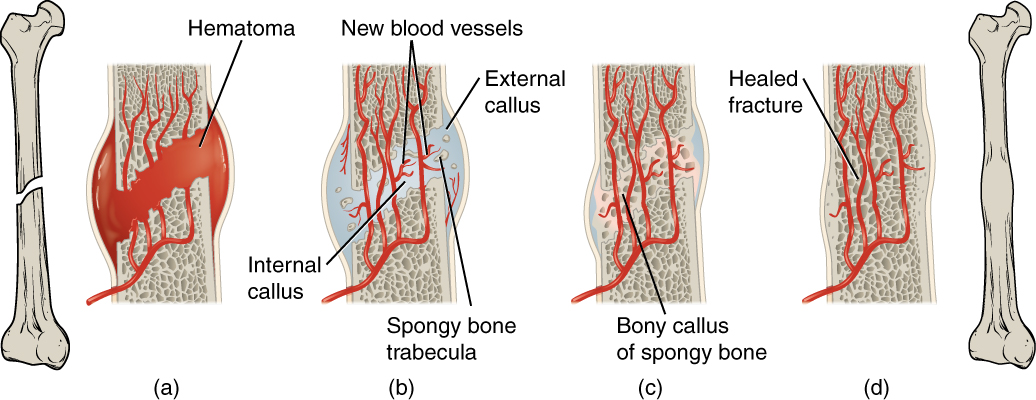
fracture hematoma
blood clot that forms at the site of a broken bone
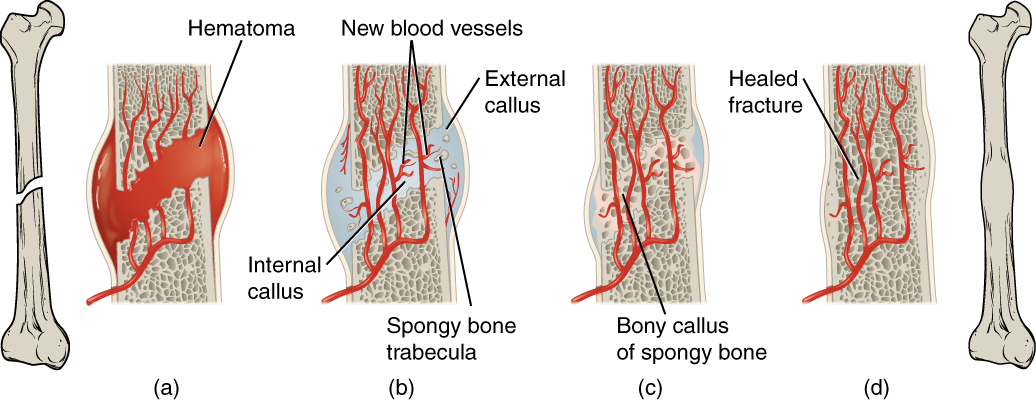
internal callus
fibrocartilaginous matrix, in the endosteal region, between the two ends of a broken bone
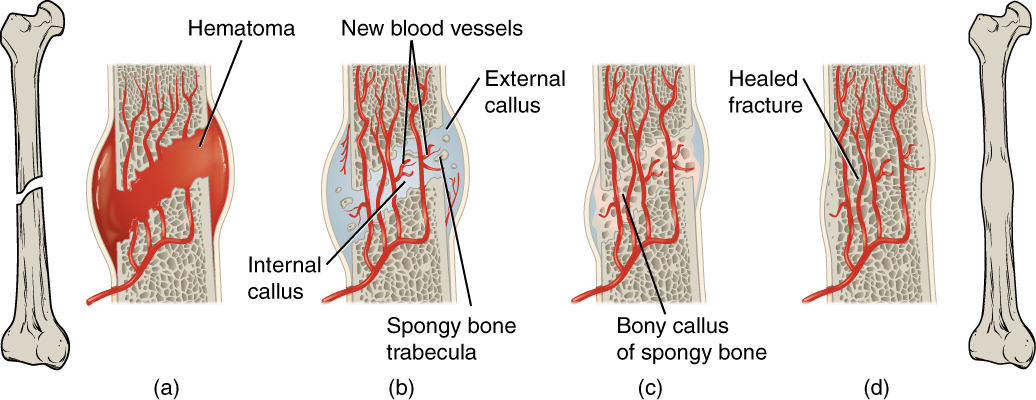
external callus
collar of hyaline cartilage and bone that forms around the outside of a fracture
